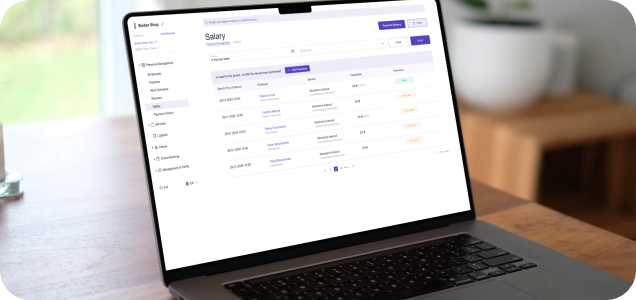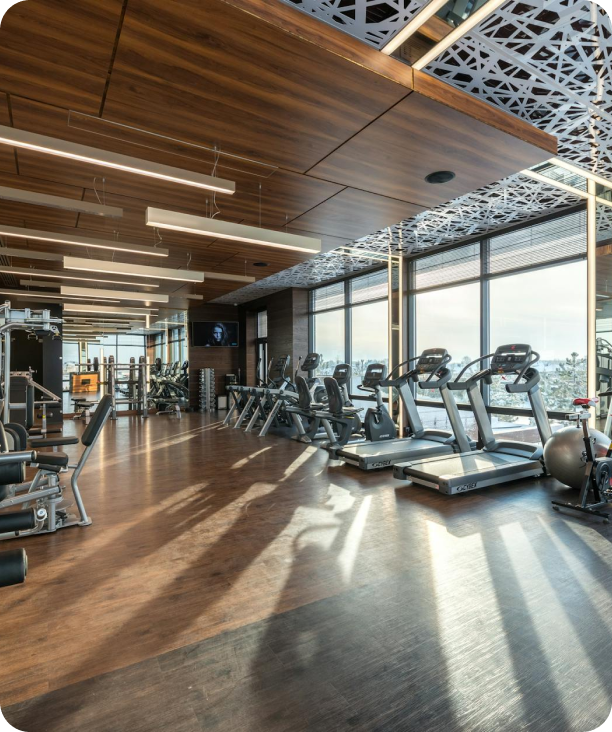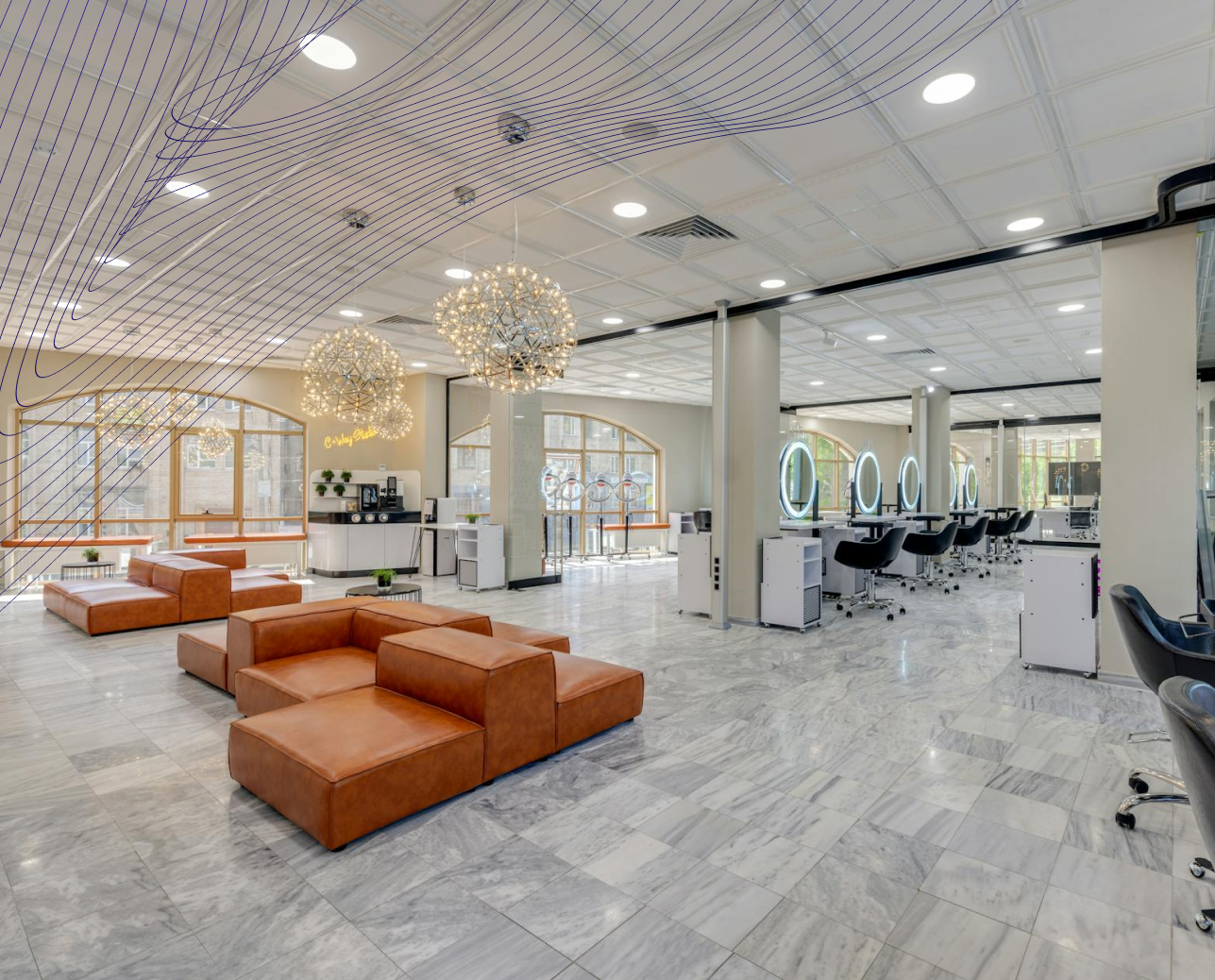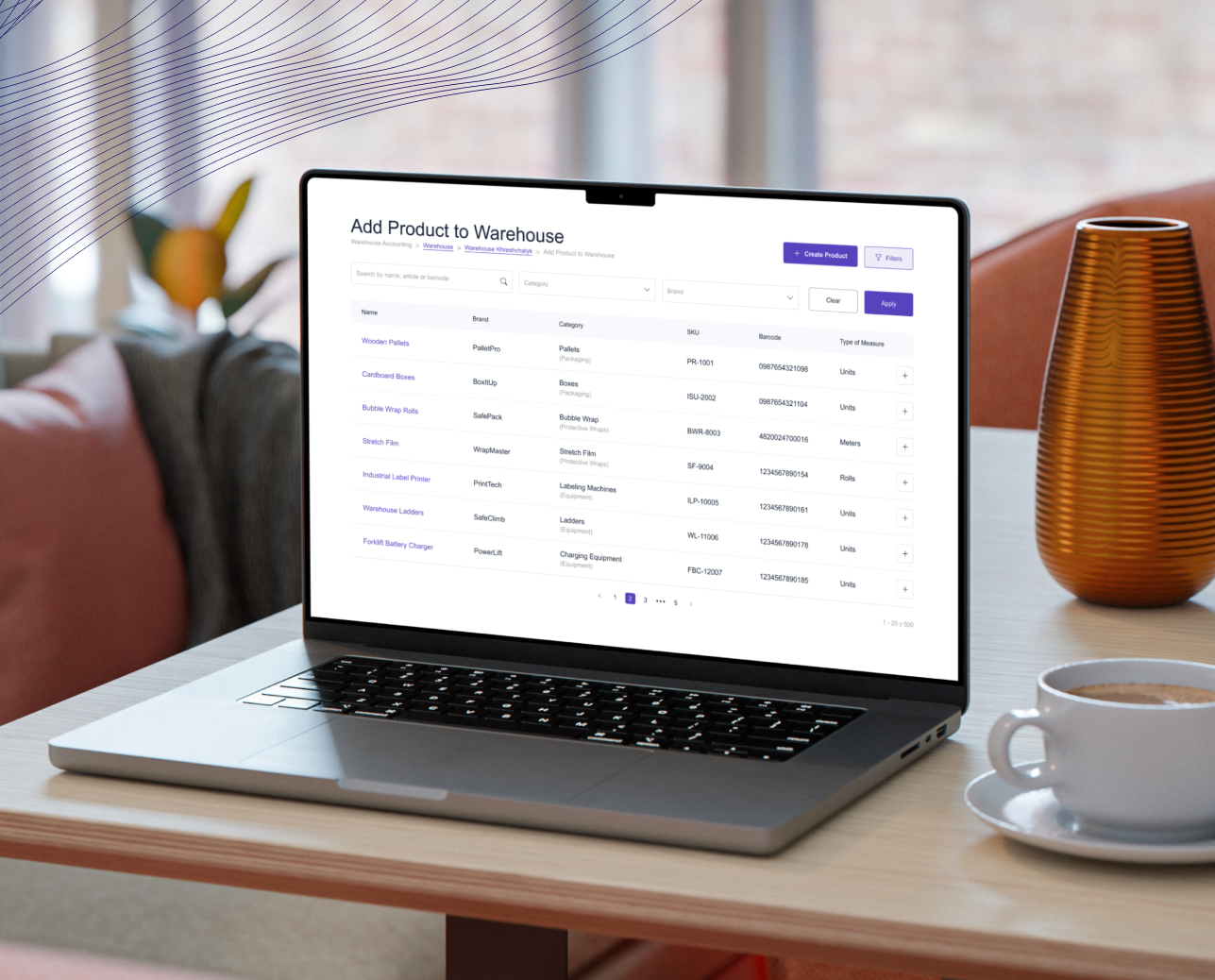How to Start a Gym as a Business: From Concept to Reality
Starting a gym business is a rewarding opportunity that combines a passion for fitness with entrepreneurial success. However, it involves far more than renting a space and buying equipment. You’ll need a comprehensive plan that covers every aspect of the business, from finances and operations to marketing and customer experience.

Opening up a gym requires significant investment, both in time and money, but with careful planning, it can become a highly profitable venture. This guide will walk you through all the steps, providing practical advice for each stage of the process. Whether you're new to business ownership or an experienced entrepreneur, following these guidelines will help you create a gym that stands out and thrives in a competitive industry.
Why Start a Gym: Exploring the Benefits
The fitness industry is booming, with increasing numbers of people becoming health-conscious and prioritizing physical well-being. This trend has created a strong demand for gyms, fitness centers, and specialized workout studios. By starting up a gym, you're tapping into this growing market. Not only will you help people meet their fitness goals, but you’ll also have the chance to generate steady, recurring revenue from membership fees and other services.
Owning your own gym offers unique benefits, including the ability to create a community of like-minded individuals who share similar goals. Gyms often become hubs for people looking to improve their health, socialize, and build new habits. As the owner, you can cultivate this community, shaping its culture and environment to ensure it reflects your values and brand identity.

Is Owning a Gym Profitable?
Profitability is a major factor for anyone considering opening a gym business. While gyms can indeed be profitable, success depends on several factors. One of the biggest contributors to profitability is your pricing model. Offering various membership tiers – such as basic, premium, and family packages – helps cater to different customer segments.
Additionally, providing extra services like personal training, group fitness classes, and nutrition consultations can further boost revenue. These services not only enhance member satisfaction but also increase retention rates. Members who feel they are receiving value beyond access to gym equipment are more likely to stay long-term.
Managing expenses is equally important. High rent, equipment maintenance, and staff salaries can eat into profits if not carefully controlled. By investing in durable equipment and optimizing your gym layout to reduce maintenance costs, you can minimize operational expenses. Consider energy-efficient lighting and smart temperature control systems to cut utility bills.
Finally, marketing is crucial to driving profitability. Strong local presence, targeted ads, and promotions that attract new members while retaining existing ones will keep your gym thriving.

What You Need to Know Before Starting a Gym
Opening a new gym involves more than just financial considerations. You need to understand the market dynamics in your area. Research your competition – what are they offering, and how can you differentiate your gym? Knowing your target audience is key. Are you catering to high-intensity athletes, casual gym-goers, or specific niches like seniors or women-only gyms? Tailoring your services to meet the specific needs of your target audience will make your gym stand out.
Consider location carefully. A gym in a busy urban area will attract different clients than one in a suburban neighborhood. Additionally, think about the type of experience you want to offer. Will your gym be a full-service fitness center with pools and saunas, or a smaller boutique studio focused on specialized classes? Understanding these elements will shape your business plan and impact every decision you make moving forward.
Business Plan for Opening a Gym
A business plan is the foundation of any successful gym. It serves as your roadmap, guiding every decision from initial setup to day-to-day operations. Without a clear plan, you risk missing critical elements that are key to success. The business plan to open a gym should outline everything from your mission and vision to your pricing model, target market, and operational structure.
In the early stages, it's essential to define your gym's unique selling point (USP). What will set you apart from the competition? Will it be specialized equipment, a particular training program, or a focus on community engagement? Identifying your USP early will guide your marketing efforts and attract your ideal members.
Beyond that, your business plan to start a gym should also cover financials in detail. Calculate startup costs, including lease agreements, equipment purchases, and initial marketing efforts. Project how long it will take to break even and when you expect to turn a profit. To manage this effectively, it’s worth integrating tools like a gym POS system. ME-POS, for instance, can help streamline billing, track member attendance, and automate administrative tasks, freeing up time for you to focus on growth.
To ensure your business plan is robust, consider the following essential components:
- Executive Summary: This is a concise overview of your gym, covering your goals and how you plan to achieve them.
-
Market Research: Include detailed research on the fitness industry, your competition, and your target demographics.
-
Operational Plan: Outline your staffing needs, membership management, and day-to-day gym operations.
-
Marketing Strategy: Identify how you’ll attract and retain members, such as offering promotional rates or referral discounts.
-
Financial Projections: Provide realistic income statements, cash flow analysis, and break-even analysis for at least the first three years.
-
Gym Technology and POS System: Include plans for implementing gym management systems like ME-POS to manage memberships and payment processing efficiently.
When writing your plan, focus on both short-term objectives, like hitting your initial membership targets, and long-term goals, such as opening additional locations or expanding your services.

Costs of Opening a Gym: A Breakdown
Starting a new gym requires significant investment, and understanding where your money will go is crucial for accurate budgeting. You’ll need to prepare for both one-time setup costs and ongoing operational expenses. Proper financial planning will allow you to start your gym without surprises and ensure you have enough capital to cover the early stages of operation.

Initial Investments
One of the largest costs to open a gym is the purchase of gym equipment. Cardio machines, weight training machines, free weights, and flooring are just the beginning. You’ll also need to allocate money for other essentials like sound systems, air conditioning, and locker room amenities. On top of this, building renovations may be required, depending on the condition of the space you lease.
Besides physical equipment, technology is an often overlooked area that needs funding. This includes not only your member management software but also your security system, Wi-Fi infrastructure, and any digital check-in systems you plan to use. A reliable POS system is essential for efficiently managing member payments, personal training bookings, and retail sales. Choosing the right software, such as ME-POS, helps automate processes that would otherwise take valuable time away from other tasks.

Ongoing Operational Expenses
Once your gym is operational, several recurring expenses will become part of your monthly budget. Rent or mortgage payments will likely be your largest fixed cost, and you should also budget for utilities like electricity, water, and heating. Gyms often consume a significant amount of energy, especially if they run air conditioning or have heated pools.
In addition to utilities, you will need to hire staff, which includes personal trainers, front desk staff, and cleaning personnel. Staff wages can vary, so be sure to budget accordingly, especially if you plan to offer competitive salaries to attract top-tier trainers.
Lastly, insurance is another important operational expense. Liability insurance protects you from any legal claims resulting from injuries or accidents in your gym. Many gym owners underestimate this cost, but it is essential to safeguard your business.

Checklist for Opening a Gym: Step-by-Step Guide
Opening a gym requires careful planning and execution. To help guide you through the process, here are steps to opening a gym.
-
Secure Licenses and Permits: Check with your local government to understand the legal requirements for opening a gym. These often include business licenses, zoning permits, and health department approvals.
-
Lease or Purchase Space: Location is key to the success of your gym. Consider traffic patterns, visibility, and accessibility for your target audience. Whether leasing or purchasing, negotiate terms that are favorable and within your budget.
-
Purchase Equipment: Source high-quality equipment that will last and provide value to your members. Consider working with a supplier that offers warranties or maintenance packages to reduce long-term costs.
-
Hire and Train Staff: Recruit staff with the skills to enhance the member experience. Ensure personal trainers are certified, and front desk employees are well-versed in customer service.
-
Implement Technology: Invest in a gym POS system, like ME-POS, to manage memberships, payments, and appointments. This will streamline operations and improve member satisfaction.
-
Launch Marketing Campaigns: Create a marketing plan to build excitement for your gym’s opening. Use a mix of social media, local partnerships, and promotional offers to drive membership sign-ups.
Completing each of these steps will help ensure your gym opens smoothly and positions you for long-term success.
Best Places to Open a Gym: Location Strategies
Choosing the right location can significantly impact the success of your gym. It's essential to consider your target demographic and the type of gym you're opening. A boutique studio may thrive in a trendy urban area, while a full-scale gym could be more suited to a suburban neighborhood with larger space and parking availability.

High-Traffic Areas vs. Suburban Locations
Urban centers typically provide high foot traffic and visibility, which is great for brand exposure. However, rent in these areas can be expensive, and you may face stiff competition from other gyms. On the other hand, suburban areas might offer cheaper rent and less competition, but attracting members could be slower due to the lower density of people.
Another consideration is parking. If your gym is in an area where parking is scarce, it might deter potential members. Ensuring you have adequate parking, or proximity to public transport, will help in attracting regular members.

Choosing the Right Demographic
Every gym caters to a specific demographic. For instance, a gym targeting working professionals will need to offer flexible hours, while a fitness center geared towards retirees might offer programs tailored to senior health. Before settling on a location, ensure that the surrounding area is populated with the type of clientele you aim to attract. Thorough demographic research will help you understand the fitness habits and needs of your potential members, allowing you to better design your gym's offerings.
Gym Grand Opening Ideas
Your gym’s grand opening is your first chance to make a splash in the community. A well-executed event will not only attract potential members but also create buzz around your new gym, helping build a solid reputation from day one.


Special Promotions and Offers
Promotions are a great way to incentivize people to join your gym during the grand opening. Consider offering a limited-time discount on memberships for those who sign up within the first week. You could also run giveaways, offering free personal training sessions or gym merchandise to the first group of sign-ups.
Creating referral programs where existing members can earn rewards for bringing in new members is another effective way to build a loyal customer base right from the start. These promotions not only increase membership numbers quickly but also encourage member retention as people sign up alongside their friends.
How to Open a Gym: Key Steps to Success
Opening a gym involves several key decisions, from designing the space to choosing equipment. To set your gym up for long-term success, it’s important to plan every detail carefully.


Choosing the Right Fitness Equipment
Investing in high-quality equipment is essential to the success of your gym. Members expect reliable, well-maintained machines, and providing this ensures satisfaction. Opt for a variety of cardio machines like treadmills, bikes, and ellipticals to cater to different fitness preferences. Strength training equipment, including free weights, resistance machines, and squat racks, should also be a priority.
When selecting equipment, think about durability and safety. Your machines will experience heavy use, so choose models from reputable brands that offer warranties and maintenance support. Offering a range of equipment that caters to beginners and experienced athletes alike will make your gym more inclusive and attractive to a wider audience.

Conclusion
Starting a gym can be a fulfilling and profitable venture, but it requires thorough planning and smart decisions. Whether you’re targeting fitness enthusiasts, busy professionals, or specialized audiences, the key to success lies in understanding your market, managing costs, and offering valuable services that keep members coming back.
Here’s a quick recap of the essential steps to open a gym:
- Create a Strong Business Plan: Outline your gym’s mission, unique selling points, services, and financial projections. This plan is the foundation for your success.
-
Choose the Right Location: Consider foot traffic, demographics, and competition in the area. The location should align with your target market.
-
Manage Costs Effectively: Understand the initial and ongoing costs of running a gym, including equipment, staffing, and rent. Make sure you budget for all necessary expenses and plan for profitability.
-
Invest in Technology: Using a gym POS system like ME-POS will help you manage memberships, payments, and promotions efficiently, saving you time and improving customer experience.
-
Marketing Matters: A well-planned grand opening, social media campaigns, and local partnerships can build buzz and attract new members quickly. Offering promotions during the launch period will also help drive membership growth.
By following these guidelines and focusing on delivering a great member experience, your gym can thrive in the competitive fitness industry. Even if you haven’t read the entire guide, these steps will give you a solid starting point to turn your gym concept into a reality.
View more
Related Articles
View more




































